If I asked about your relationship with fat, you’re likely to grimace and tell me that it’s something you want to lose from your waistline and avoid in your diet. I often hear my clients say that their main motive for exercise is to lose weight, in terms of having less fat to pinch.
Looking toned and svelte is a modern and first world aspiration and also embodies our vision of what it is to be fit. Social media can put pressure on people to look a certain way, but it also raises awareness of positive body image vs body dysmorphia, in a bid to promote mental health. The result is confusing and begs the question: ‘Is what’s healthy for our minds also healthy for our bodies?’
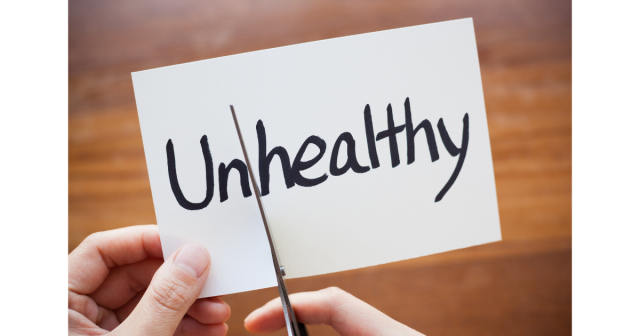
relationship with fat
I think it’s time to look more closely at the role of fat in our bodies and in our diet and think about how much fat is actually okay for us to carry. Tom Ireland, writing for BBC Science Focus, tells us that, “Fat is one of the most important elements of our diet.” This may surprise you but remember that fat does play a positive part in how we function; it stores energy when food is scarce, it insulates us from the cold, cushions our joints against impact and is also part of the tissue that keeps our organs in place.
Adipocytes
Fatty tissue is made up from special cells called adipocytes, or fat cells, collectively known as the adipose organ. It’s found all over the body, as visceral fat around internal organs and as subcutaneous fat under the skin. Ireland tells us that, “The adipose organ has a rich supply of blood vessels and nerves, and produces a variety of hormones and signalling molecules that send information to the brain about the state of our calorie stores, influencing our digestion, appetite and behaviour.”
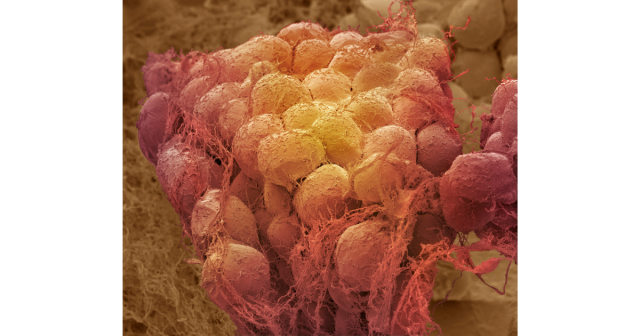
adipocytes are fat cells in which there are 2 types – white fat cells and brown fat cells
Any fat consumed that’s not used by your body’s cells or turned into energy is stored in our fat cells as fatty molecules, known as lipids, and these act as the body’s main energy reserve.
Professor O’Rahilly says that, “If, for any reason, we don’t have this storage space, then that excess energy in the form of fat is redirected to our bloodstream, liver, muscle or pancreas. None of these are designed to store fat, and all of them are readily damaged by trying to do so.”
Each fat cell in the adipose tissue contains just one droplet of liquid fat that can swell to accommodate more fat or shrink to release it. Throughout our lives we have the same number of fat cells, whether we lose or gain weight – the cells can either grow or shrink dramatically. During weight loss, these liquid fat reserves are called upon to fuel the body.
Researchers at the Karolinksa Institute, Sweden, have found that we continually create new fat cells to replace those that break down and they’ve discovered that fat cells in obese people are dying and being replaced more often and more rapidly than for lean people.
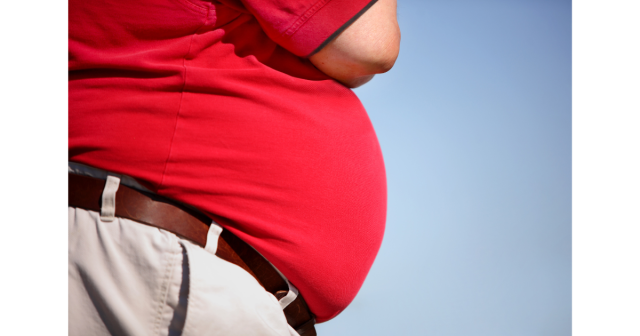
fat cells in obese people are dying and being replaced more often and more rapidly than for lean people
The efficiency of our fat cells predisposes how healthy we are, as Professor O’Rahilly warns, “There is growing evidence that how well – or badly – our adipose organ performs is one of the major determinants of whether, in the face of an excess of calorie ingestion, we develop diabetes, heart attacks, fatty liver disease and so on, or whether we remain overweight but basically healthy.”
BMI
I’m sure you are all aware of the Body Mass Index (BMI) and it’s a good idea to check this from time to time. For most adults a normal range would be between 18.5 – 25 taking into consideration your age, gender and height. If you are close to the upper or lower end of this range, you will know to assess and adjust your diet.
Wait-to-hip ratio
However, there is grown evidence that waist-to-hip ratio is a far better method of measuring healthy weight. “It doesn’t consider where fat is stored — whether it’s accumulated around the hips or the waist. As a result, BMI doesn’t reliably predict risk of disease or mortality,” said Irfan Khan, a medical student at University College Cork’s College of Medicine and Health in Cork, Ireland, who carried out the research with colleagues in Canada.
Levels of stored fat around the waist is a better indicator of visceral fat and the link between visceral fat stored around your organs and the increase the risk of certain health conditions, such as diabetes, prediabetes, dementia, cancer and heart disease.
To calculate your WHR at home, follow these instructions:
- Stand up straight.
- Find, and measure, the smallest part of your waist. It’s usually right above the belly button. This measurement is your waist circumference.
- Find, and measure, the widest part of your hips or buttocks. This measurement is your hip circumference.
- Divide your waist circumference by your hip circumference. This is your WHR.
According to a 2008 report by the World Health Organization (WHO), citing a 2001 studyTrusted Source, a waist-to-hip ratio above .85 for women and .90 for men indicates abdominal obesity.
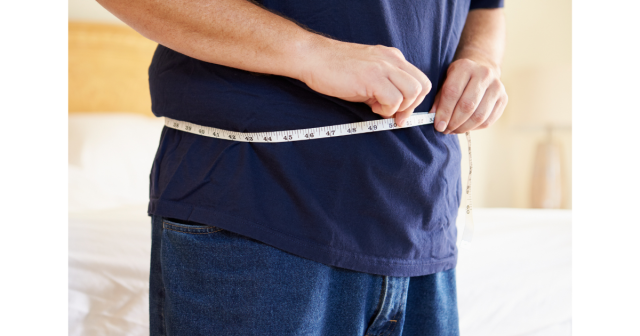
waist-to-hip ratio more relevant than BMI
Moderation is key
Even though it’s clear that fat plays a vital part in our overall health, as with all conversations about diet, moderation is key. There is an optimum weight for us all and we need to find the right balance with our food and exercise if we are to avoid diet-induced health disorders.
The NHS recommends “a small amount of fat” as an essential part of a healthy balanced diet and explains that fat is a source of essential fatty acids, which the body can’t make for itself. In addition, vitamins A, D and E are fat soluble and so can only be absorbed with the help of fats.
When talking about fat intake, we need to think not only about quantity but also about ‘good’ fats and ‘bad’ fats. This can help you build a better relationship with your fat intake.
FAT FACTS
Limit saturated fats:
- They can raise your cholesterol and raise your risk of heart disease and stroke. Eg. fatty cuts of meat, sausages and pies, butter, cheese, cream, chocolate, biscuits, cakes, palm oil, coconut oil
Swap saturated for unsaturated fats:
- Evidently this can help to lower your cholesterol level and they include:
Monounsaturated
- Eg. olive oil, rapeseed oil, avocados, almonds, brazils and peanuts
Polyunsaturated
- Omega 6 fats: rapeseed, corn, sunflower
- Omega 3 fats: kippers, herring, trout, sardines, salmon, mackerel
Buy foods labelled “lower fat”
Lower fat means that the product is around 30% lower fat than its full fat equivalent.
Caution: If the food is usually high in fat, the lower fat version may still be high in fat. Plus, look to lower your saturated fats and keep unsaturated fats in your diet in moderate amounts.
So what counts as high fat and low fat?
Total fat:
- High: more than 17.5g of fat per 100g (packaging may be colour-coded red).
- Low: 3g of fat or less per 100g (packaging may be colour-coded green).
Saturated fat:
Look out for ‘saturates’ or ‘sat fat’ on the label: this tells you how much saturated fat is in the food.
- High: more than 5g saturates per 100g (packaging may be colour-coded red).
- Low: 1.5g saturates or less per 100g (packaging may be colour-coded green).
If the amount of fat or saturated fat per 100g is in between these figures, that’s a medium level, and packaging may be colour-coded amber.
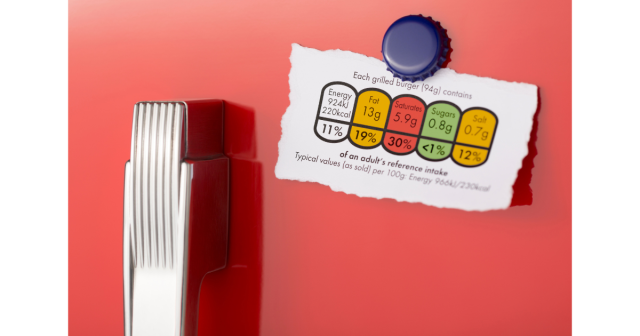
According to nutritionist Liz Weinandy, our consumption of fat is vital for proper brain function, but, she says it needs to be the right kind of fat, “We need to get enough omega 3-fatty acids because these are the essential building blocks of our brain and they’re important for learning and memory.” She recommends a diet rich in fatty fish, such as salmon and sardines, and plant sources such as walnuts, flaxseeds and chia.
Finishing with something to bear in mind, if you’ll pardon the pun, did you know that our brains are made up of 60% fat? Evolving away from apes, over a period of six to eight million years, the human brain tripled in size and uses more energy than any other tissue. This is one reason why healthy humans carry between 14-31% body fat while other primates, with their smaller brains, carry less than 9%.

